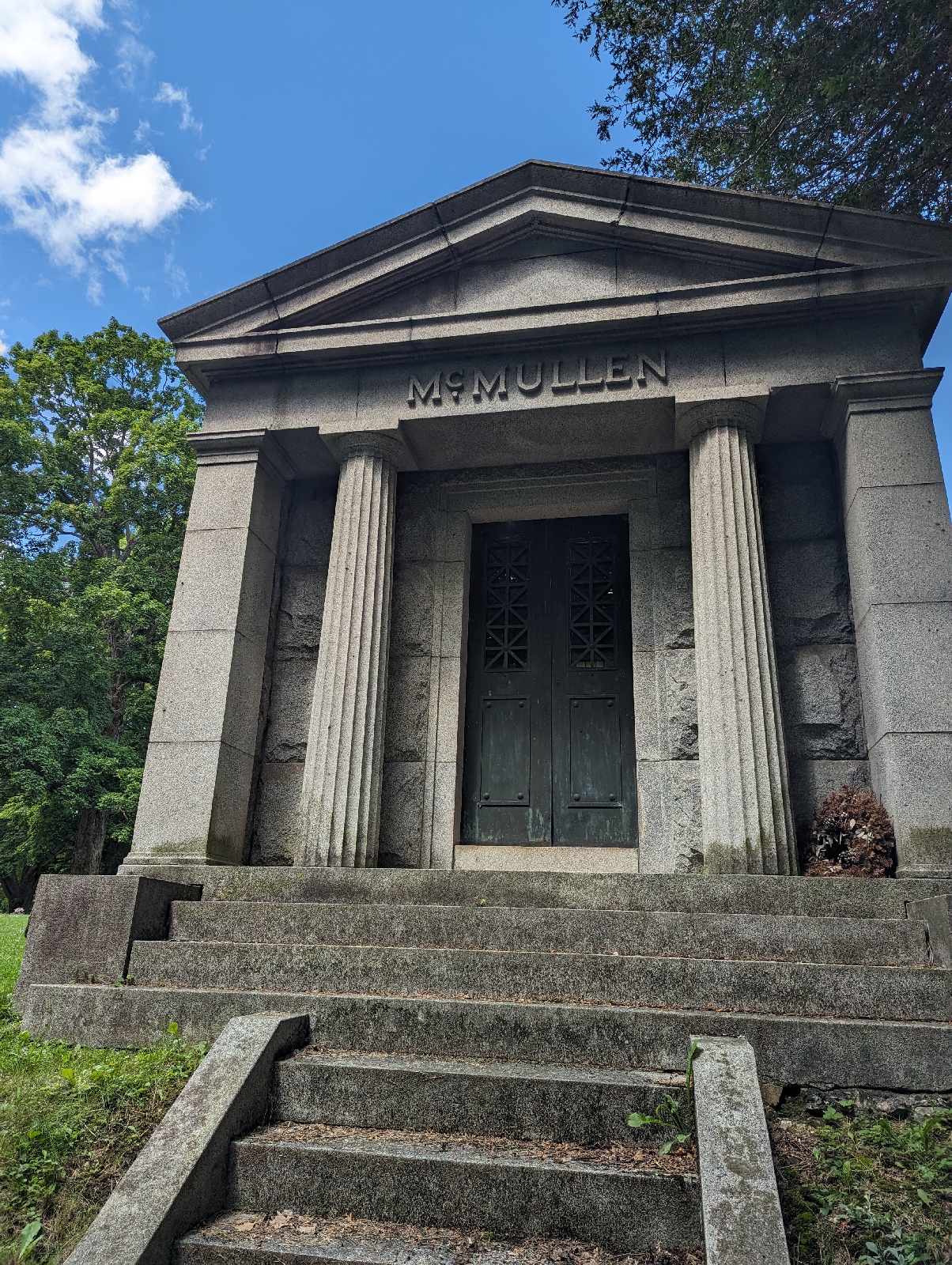M is for Mausoleum
A mausoleum is a building, usually in a cemetery, that houses tombs. It is common to see mausoleums dedicated to families (such as the one pictured above) but they can also be larger and hold a number of different individuals who are not related. A famous and very old rendition of a mausoleum is a pyramid, where the tombs of Pharaohs were interred. Mausoleums may hold tombs with caskets or cremated remains. Mausoleums may be private with restricted access or public, allowing anyone to visit.
N is for Niche
A niche is an above ground burial location for cremated remains. The columbarium shown above has approximately 60 niches for urns or other cremated remains to be stored in. Cremation is not allowed in some religions but currently there is an increasing trend in cremation. Choosing a niche for internment is a more sustainable choice as it doesn't take up as much land or space as a traditional burial.
O is for Obelisk
An obelisk-style monument is a tall stone pillar that comes to a point in a cross section or pyramidal shape. This style can be found in monuments outside of cemeteries and can be dated back to ancient Egypt. This style of gravestone monuments became popular in the 1800's and you can usually find one or more in cemeteries dating back to this time period. They are said to symbolize greatness and godliness.


